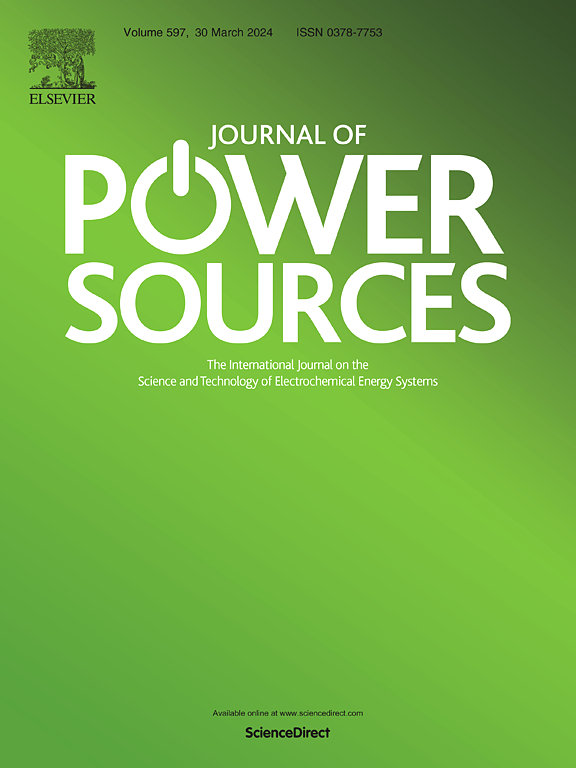袋装锂离子电池力学损伤与容量衰减的连续多尺度研究
IF 8.1
2区 工程技术
Q1 CHEMISTRY, PHYSICAL
引用次数: 0
摘要
电化学诱导应力引起的介观电极颗粒力学破坏是导致锂离子电池宏观性能下降的关键因素。现有的锂电池多尺度研究大多依赖于布鲁格曼系数进行等效性能分析,而没有考虑介观电极结构。很少有模型结合宏观-细观应力传递关系或损伤-包容本构律来分析机械损伤对电极的影响。为了解决这些问题,本研究研究了锂化或衰减引起的充放电循环中的介观电极损伤行为。分析了连续介质损伤对电极性能的影响。建立了考虑介观电极损伤的序贯多尺度模型,采用应力放大系数法量化介观损伤引起的电池宏观容量衰减。从介观损伤的角度探讨了锂离子电池的容量衰减机理。本文章由计算机程序翻译,如有差异,请以英文原文为准。
A sequential multi-scale study on mechanical damage and capacity decay in pouch lithium-ion batteries
Mechanical failure of mesoscopic electrode particles caused by electrochemically induced stress is a critical factor contributing to the macroscopic performance degradation of lithium-ion batteries. Most existing multi-scale studies on lithium batteries rely on Bruggeman coefficients for equivalent performance analysis without accounting for mesoscopic electrode structures. Few models integrate macroscopic-mesoscopic stress transfer relationships or damage-inclusive constitutive laws to analyze the impact of mechanical damage on electrodes. Addressing these gaps, this study investigates mesoscopic electrode damage behaviors during charge-discharge cycles induced by lithiation or delithiation. Continuous medium damage effects on electrode performance is analyzed. A sequential multi-scale model incorporating mesoscopic electrode damage is established, and the stress amplification factor method is employed to quantify macroscopic battery capacity decay caused by mesoscopic damage. The capacity decay mechanism of lithium-ion batteries is discussed from a mesoscopic damage perspective.
求助全文
通过发布文献求助,成功后即可免费获取论文全文。
去求助
来源期刊

Journal of Power Sources
工程技术-电化学
CiteScore
16.40
自引率
6.50%
发文量
1249
审稿时长
36 days
期刊介绍:
The Journal of Power Sources is a publication catering to researchers and technologists interested in various aspects of the science, technology, and applications of electrochemical power sources. It covers original research and reviews on primary and secondary batteries, fuel cells, supercapacitors, and photo-electrochemical cells.
Topics considered include the research, development and applications of nanomaterials and novel componentry for these devices. Examples of applications of these electrochemical power sources include:
• Portable electronics
• Electric and Hybrid Electric Vehicles
• Uninterruptible Power Supply (UPS) systems
• Storage of renewable energy
• Satellites and deep space probes
• Boats and ships, drones and aircrafts
• Wearable energy storage systems
 求助内容:
求助内容: 应助结果提醒方式:
应助结果提醒方式:


